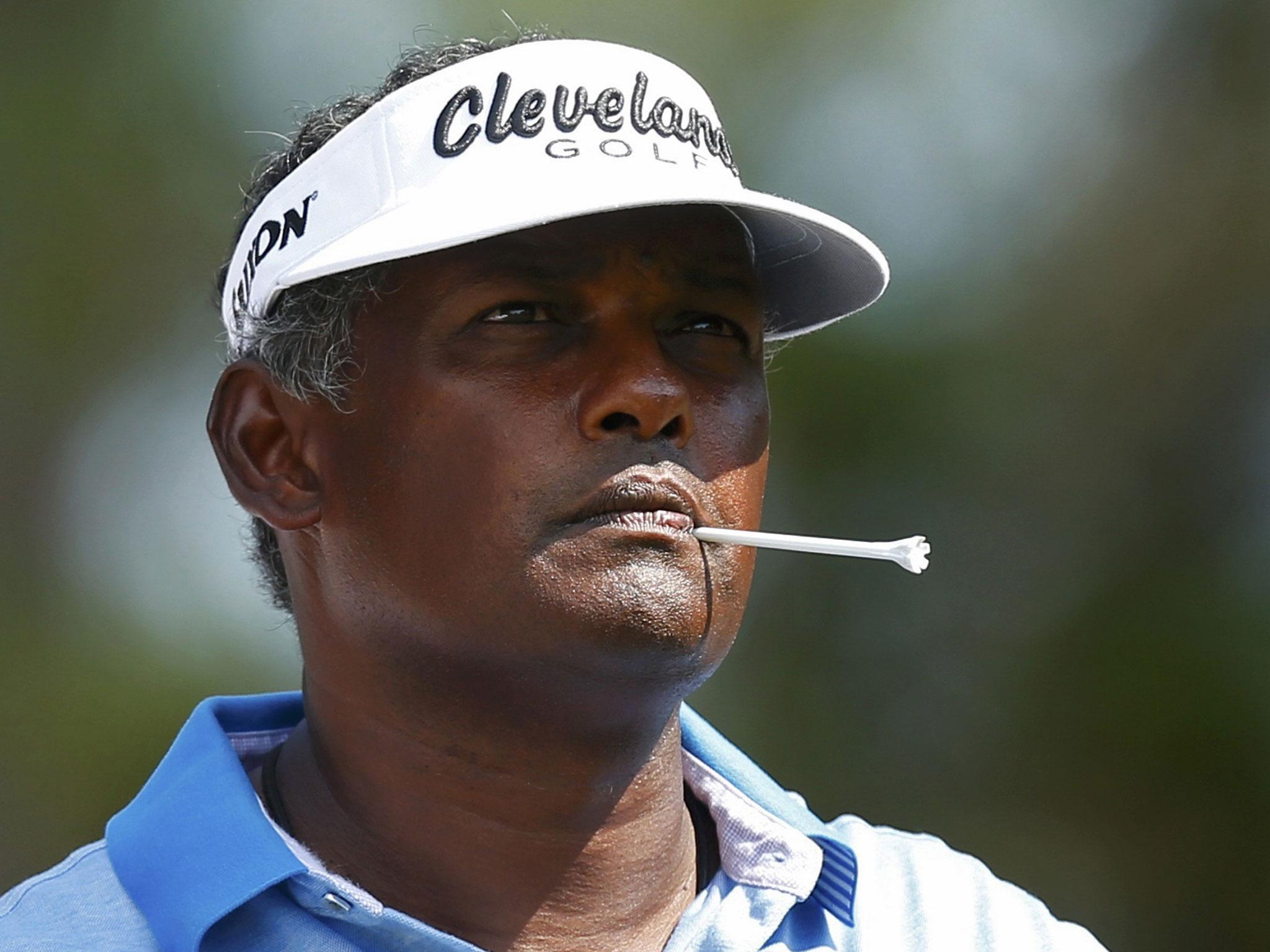The Last Word: The tangling of sporting horns should not be taken literally
Bizarre therapies enable an athlete to soothe his scruples as well as his limbs

You can only hope these guys have all been reading the label. Get the dose wrong, and Vijay Singh could have turned into the first talking moose since the one in the lobby of Fawlty Towers told the Major he was learning English “from a boo-ook”.
Sportsmen, of course, are the very last people who need antlers. The human species has adapted mate selection so that the implied eugenic appeal of an elite athlete is indicated more blatantly by display, in wealth and celebrity, than by the tangling of horns in actual competition. True, Lionel Messi’s humble bearing is consistent with a physique that made him known as “The Flea”. But that’s why Cristiano Ronaldo, in his seething physical vanity, is such a perfect foil. Messi needed growth hormones in adolescence. And I need deer-antler spray. For the amplification of my genetic wares, I certainly need it more than do towering, millionaire golfers or hulking, millionaire American footballers.
Depending who you believe, this stuff is either a 21st-century variation on the snake oil formerly hawked by fairground hucksters, or can turn you from a tick on the heather into the Monarch of the Glen himself. It has been used in Chinese medicine for 2,000 years, to strengthen bone, tendon and libido. Clinical studies have also identified anti-depressant properties. Even now, China produces nearly 100 tons of dried antler velvet every year, and it is also harvested for export in Russia. But the Asian market apparently prizes above all the North American elk, which is considered especially potent.
No animal tissue grows faster than antlers, which are shed and renewed annually. Their possible value to man was famously tested in a blind trial of athletes in New Zealand, half being administered antler velvet daily for 10 weeks, half receiving a placebo. Muscular endurance doubled among the former group; moreover their muscles gained efficiency but not mass. Suddenly professional sport wondered whether it had a natural alternative to anabolic steroids.
When antler use was prohibited (as is no longer the case) it turned out that a vital hormone in them could not be detected in urine samples. The exotic, ancient elixir duly found its place in sport’s quack cabinet – which, like aphrodisiac recipes, seems to be stocked on the basis that the less palatable something sounds, the sweeter the dividends can be.
Twenty years ago, for instance, the abrupt and conspicuous improvement in Chinese distance runners was attributed by their coach to the ingestion of turtle soup – and worms. Whatever else they might have been consuming, they certainly devoured records, one of them taking 42 seconds off the previous best for 10,000m.
In Australia, peptides that assist growth and recovery have reportedly been extracted from pig brains for use by athletes. And then there is the rumoured prescription to baseball stars of Actovegin, derived from calf blood, to heighten stamina and oxygenation. In American football, it is believed that an ointment intended for racehorses has been widely applied, possibly for rapid absorption of other medications. Needless to say, there are plenty of other tricks that might be borrowed from the Turf, especially in America – where cobra venom is being supplanted, as the latest in deluxe pharmacology, by a secretion from the waxy monkey tree frog.
The obvious appeal of all these bizarre therapies is that they make it easier for an athlete to soothe not only his aching limbs, but also his scruples. Compared with the brazen syringe, there is a consolingly innocuous, nearly wholesome resonance to lawful remedies derived from nature. The whole paradox of the moral cheat is that he invalidates precisely those ends by which he justifies his means. To be the best, he must secretly become the worst. This is the true edge he finds in calf, pig or deer: instead of deceiving everyone else, he can deceive himself.
But it is not sophistry that is supposed to set us apart from animals. Deep down, the human conscience recognises every line it crosses. Think of those cyclists who knew doping to be endemic, and still found it in their hearts to resist the contamination. In dooming themselves to inevitable defeat, they won a secret victory – precisely inverting the moral experience of the “winner”. Remember how Atticus Finch defined courage, in To Kill A Mockingbird: “It’s knowing you’re licked before you begin but you begin anyway and you see it through no matter what.”
As well as Monarch of the Glen, Landseer also painted A Distinguished Member of the Humane Society: a portrait of a dog, rescued from a shipwreck, who saved 23 people from drowning in 14 years patrolling the banks of the Thames. The Royal Humane Society rewarded the pooch with a medal, and subsistence. Instead of cervid virility, then, perhaps sport’s biochemists should sooner be seeking some extract that borrows the selfless courage of man’s best friend.
Subscribe to Independent Premium to bookmark this article
Want to bookmark your favourite articles and stories to read or reference later? Start your Independent Premium subscription today.

Join our commenting forum
Join thought-provoking conversations, follow other Independent readers and see their replies